Herbaceous plants belonging to the Orchid family. They are represented by epiphytic (plants that live without connection with the soil, most often on another plant, receiving nutrients from the environment) and lithophytic (plants that need rocky or rocky terrain for life) forms. Epiphytes predominate among phalaenopsis.
In nature, phalaenopsis lives in the humid tropics of Indonesia, Australia, Southeast Asia, the Philippine Islands.
Content
General information about Phalaenopsis
Literally translated from Greek, Phalaenopsis sounds like "moth-like". This is not surprising, because the flowers of this unusual plant are shaped like a flying tropical moth or butterfly. The variety of colors is amazing. Even if you set out to collect orchids of all existing colors and shades at home, it will take a lot of time to achieve it. But even one or several phalaenopsis can significantly decorate your home and give you positive emotions from contemplating their indescribable beauty.
How to choose Phalaenopsis?
 So, you have decided to please yourself with the purchase of this beautiful plant. What should be considered when choosing an orchid?
So, you have decided to please yourself with the purchase of this beautiful plant. What should be considered when choosing an orchid?
- It is desirable to acquire the plant during the flowering period. Then you can choose the color that you like or that is missing in your collection.
- You should pay attention to the leaves: in a healthy plant, they are dark green, fleshy, with a waxy sheen. Flowers with damaged, dry or discolored leaves are best left in the store.
- Phalaenopsis roots are green and powerful. If you move a healthy flower in a pot, the roots will sit tightly in the substrate. If the root system of the orchid suffers, then the roots will be lethargic and mobile.
Choosing a location and temperature
Now you have purchased your phalaenopsis and now he needs care at home after the store. In order for the flower to be comfortable, you need to choose the right place where it will live and choose the temperature regime, since it directly depends on whether the orchid will please you with flowering or not.
Phalaenopsis is very fond of light, so you need to keep it in well-lit places, for example, on windowsills. But it should be remembered that direct sunlight can cause burns to the plant. Therefore, it is better to put them on the east or west side. If in your house the windows face south, you can make a shelf, place it near the window and put the phalaenopsis there.
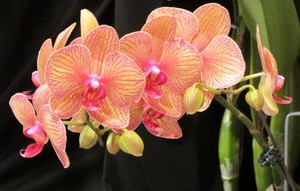 There are some peculiarities regarding the temperature regime. To stimulate the flowering process, you need to create a temperature gradient: in the summer, maintain 24-26 degrees, and in winter, reduce the temperature to 15-17 degrees for a couple of weeks. The flower will withstand 30–32 degrees, but if such numbers hold for a long time, your phalaenopsis will react to this by dropping its beautiful flowers and wilting leaves.
There are some peculiarities regarding the temperature regime. To stimulate the flowering process, you need to create a temperature gradient: in the summer, maintain 24-26 degrees, and in winter, reduce the temperature to 15-17 degrees for a couple of weeks. The flower will withstand 30–32 degrees, but if such numbers hold for a long time, your phalaenopsis will react to this by dropping its beautiful flowers and wilting leaves.
With proper home care, the phalaenopsis orchid will delight you with flowering from 3 to 6 months.
Choosing the right substrate and pot
In order for the Phalaenopsis orchid to feel good, home care should mean a responsible approach to choosing a pot and soil in which it will grow.
Phalaenopsis needs a substrate to give a stable vertical position, because. in nature, the flower is watered with tropical rains and from the bottom, when moisture diffuses through the leaves, it receives nutrients. Phalaenopsis roots are called aerial and do not need to be constantly in water. Therefore, especially for them, there is a substrate for sale, consisting of bark, which provides constant access of air to the root system of the flower. If there is insufficient humidity in the room, a little sphagnum moss can be added to the substrate, however, the main thing here is not to overdo it, as it will retain water.
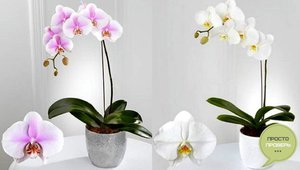 It is better to choose a transparent pot, then the state of the substrate and plant roots will always be under your visual control. Pot size matters: if it is large for phalaenopsis, then the soil will not dry out well, which will eventually lead to root rot. And too small a pot size will lead to permanent trauma to the root system. For aesthetics, you can place a transparent pot in a multi-colored planter, although the sight of a healthy and blooming orchid will attract all eyes.
It is better to choose a transparent pot, then the state of the substrate and plant roots will always be under your visual control. Pot size matters: if it is large for phalaenopsis, then the soil will not dry out well, which will eventually lead to root rot. And too small a pot size will lead to permanent trauma to the root system. For aesthetics, you can place a transparent pot in a multi-colored planter, although the sight of a healthy and blooming orchid will attract all eyes.
Humidity and watering
In order for the orchid to grow and delight its owner with it air humidity is required in the range of 30-40%... If the air temperature exceeds the comfortable temperature for phalaenopsis, the flower pot can be placed on a pallet with wet rubble or pebbles. But do not forget that with excessive moisture, the roots may begin to rot.
Watering or "Bathing" phalaenopsis is a kind of ritual, which allows you to provide the flower with proper care. You should always have standing water or rainwater close at hand. The water temperature for bathing an orchid at home should be slightly above room temperature — approximately 26–8 degrees.
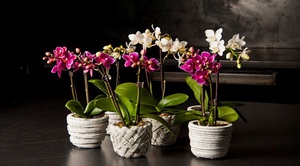 Into a container filled with prepared water it is necessary to immerse the pot with the plant for 20–45 minutes to sufficiently saturate the substrate with moisture. After bathing, place the phalaenopsis pot on a tray or recessed dish so that excess moisture is removed through the drainage holes in the bottom of the pot. Stagnation of moisture around the roots of phalaenopsis should not be allowed.
Into a container filled with prepared water it is necessary to immerse the pot with the plant for 20–45 minutes to sufficiently saturate the substrate with moisture. After bathing, place the phalaenopsis pot on a tray or recessed dish so that excess moisture is removed through the drainage holes in the bottom of the pot. Stagnation of moisture around the roots of phalaenopsis should not be allowed.
This ritual should be performed once a week. But if the temperature in the room where the orchid grows is above 30 degrees, you need to do it 2 times a week.
How to transplant phalaenopsis correctly?
The orchid is transplanted no more often than once every three years. This is best done in the spring.... But it may also be that the plant will need a transplant immediately after you bring it from the store. It is advisable to do this when the orchid stops blooming.
For transplanting, it is better to use a new substrate, but if this is not possible, then the old one will do. It must be thoroughly rinsed, boiled and dried completely.
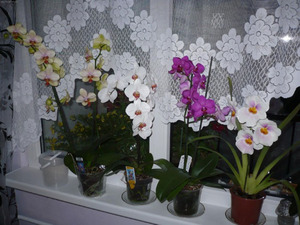 Phalaenopsis must be removed from the pot, the roots must be cleaned of soil residues. Then his nit's good to see and if so, remove yellowed leaves and spoiled roots. The cut sites should be treated with an antiseptic. You can use scissors to cut off unusable parts of the plant.
Phalaenopsis must be removed from the pot, the roots must be cleaned of soil residues. Then his nit's good to see and if so, remove yellowed leaves and spoiled roots. The cut sites should be treated with an antiseptic. You can use scissors to cut off unusable parts of the plant.
If there are no holes in the bottom of the pot where you will transplant the orchid, you need to do them yourself... Then a layer of expanded clay is laid on the bottom, which will perform a drainage function. Place the flower in the center and sprinkle it evenly with the substrate, not forgetting that the roots must have access to air.
Conditions under which the orchid will bloom
- Control of air humidity in the room where the phalaenopsis lives. Humidify if necessary, as humidity is often low in the summer.
 Adequate lighting is required, but not in direct sunlight.
Adequate lighting is required, but not in direct sunlight.- Temperature fluctuations should be minimal, with the exception of lowering it to stimulate the flowering process.
- Try to refrain from rearranging the orchid pot from place to place.
It is difficult to single out the main condition, since the observance of all of them in a complex leads to the desired result.
After the cessation of flowering, Phalaenopsis needs special care... In order for the flowers to appear again and again, you need to give the plant a rest. For this, the peduncle is cut to the third bud or remains intact. When the orchid is ready to bloom again, it will eject a new flower stalk.
How to breed domestic phalaenopsis?
Once you realize that home orchid care is pretty simple, you may be tempted to try breeding your pets. There is nothing difficult here either, but you need to be patient.
With a careful examination of the peduncle, it is necessary to determine the presence of dormant buds. To awaken her you need a temperature regime of 24-29 degrees... A semicircular incision is made with a sharp object in the area of the base of the kidney scales and it is removed with tweezers. The exposed kidney is treated with cytokine paste and covered with a piece of sphagnum.
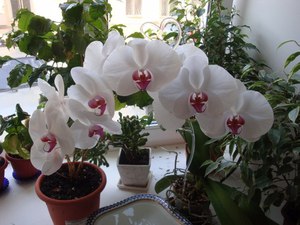 After 4-6 weeks one or more cubs can be observed on the plant with two or three tiny leaves. The number of babies depends on how many kidneys you have treated. But it should be remembered that more than one should not be processed on one plant, since it can give all its strength to the children, and itself perish.
After 4-6 weeks one or more cubs can be observed on the plant with two or three tiny leaves. The number of babies depends on how many kidneys you have treated. But it should be remembered that more than one should not be processed on one plant, since it can give all its strength to the children, and itself perish.
At the end of 3-4 months, the cubs have the first roots. Once they get strong and reach a length of at least two centimeters, cut the young orchid with a piece of the mother's and transplant into a separate pot. Cover the roots with moss to protect them from drying out. If there is insufficient air humidity in the room where the young flower will grow, you can make a greenhouse from a plastic bag. Further care is the same as for the rest of the phalaenopsis.
Choosing fertilizers
Another prerequisite for adequate care is the correct fertilization, since this is essential.
 In order for the plant to easily release new leaves, it is necessary to use complex fertilizers, with a greater proportion of nitrogen in them. But you should know when to stop so as not to overdo it, since the massive build-up of leaves prevents flowering. To correct this oversight, you should stop feeding.
In order for the plant to easily release new leaves, it is necessary to use complex fertilizers, with a greater proportion of nitrogen in them. But you should know when to stop so as not to overdo it, since the massive build-up of leaves prevents flowering. To correct this oversight, you should stop feeding.- And now there are enough leaves. Now you can spur the phalaenopsis to flowering, feeding it with fertilizer with a higher content of potassium and phosphorus than nitrogen. The mixture should be added until the flowering process begins.
- For phalaenopsis orchids, ready-made liquid dressings are often used, so there is no need to prepare them independently.
- In summer, plants should be fertilized on average twice a month, and in winter once.
Observing simple conditions and guided by the rules of caring for phalaenopsis, you can grow at home a whole greenhouse of fabulously beautiful flowers that will not leave anyone indifferent.
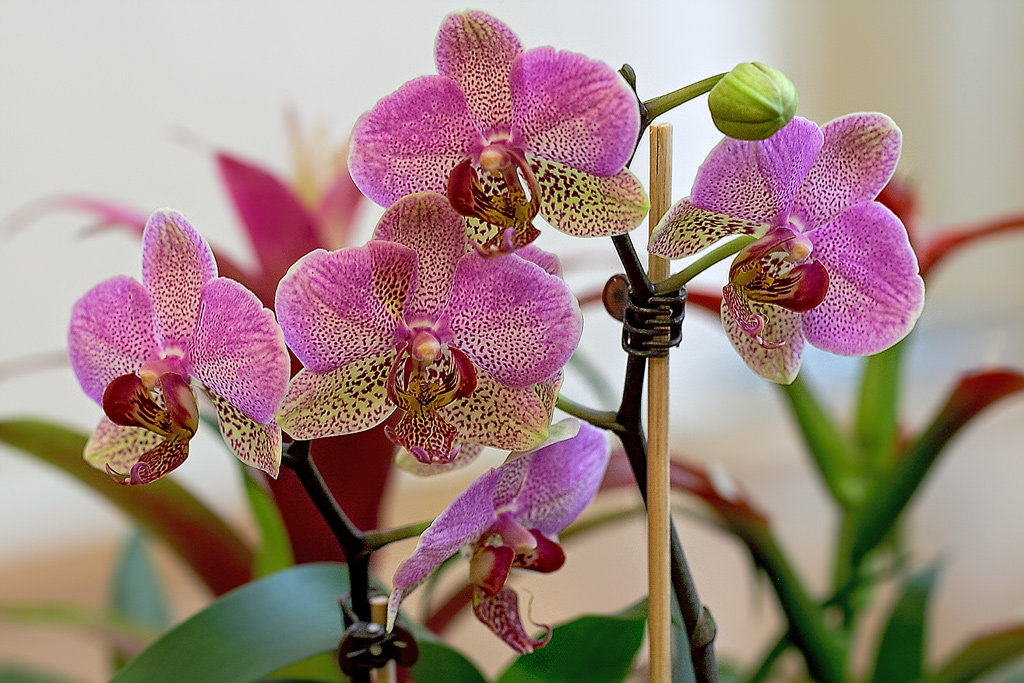
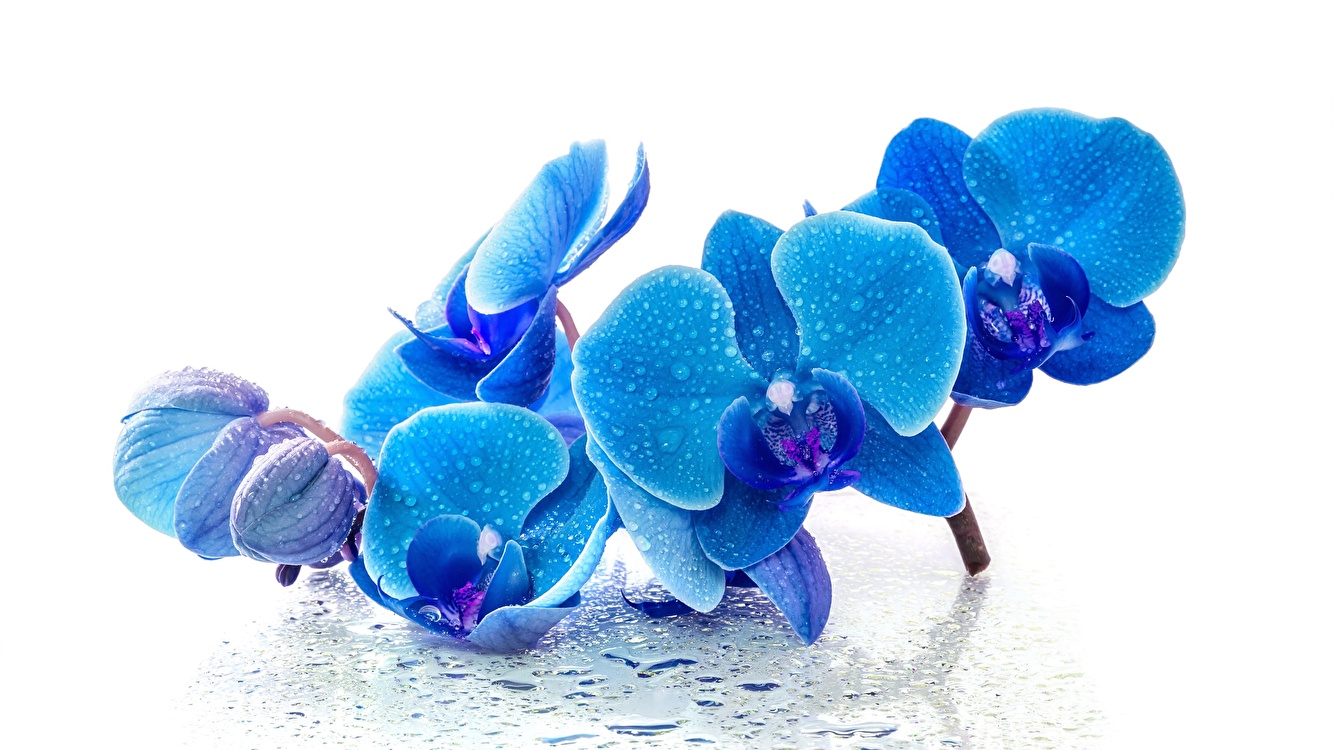
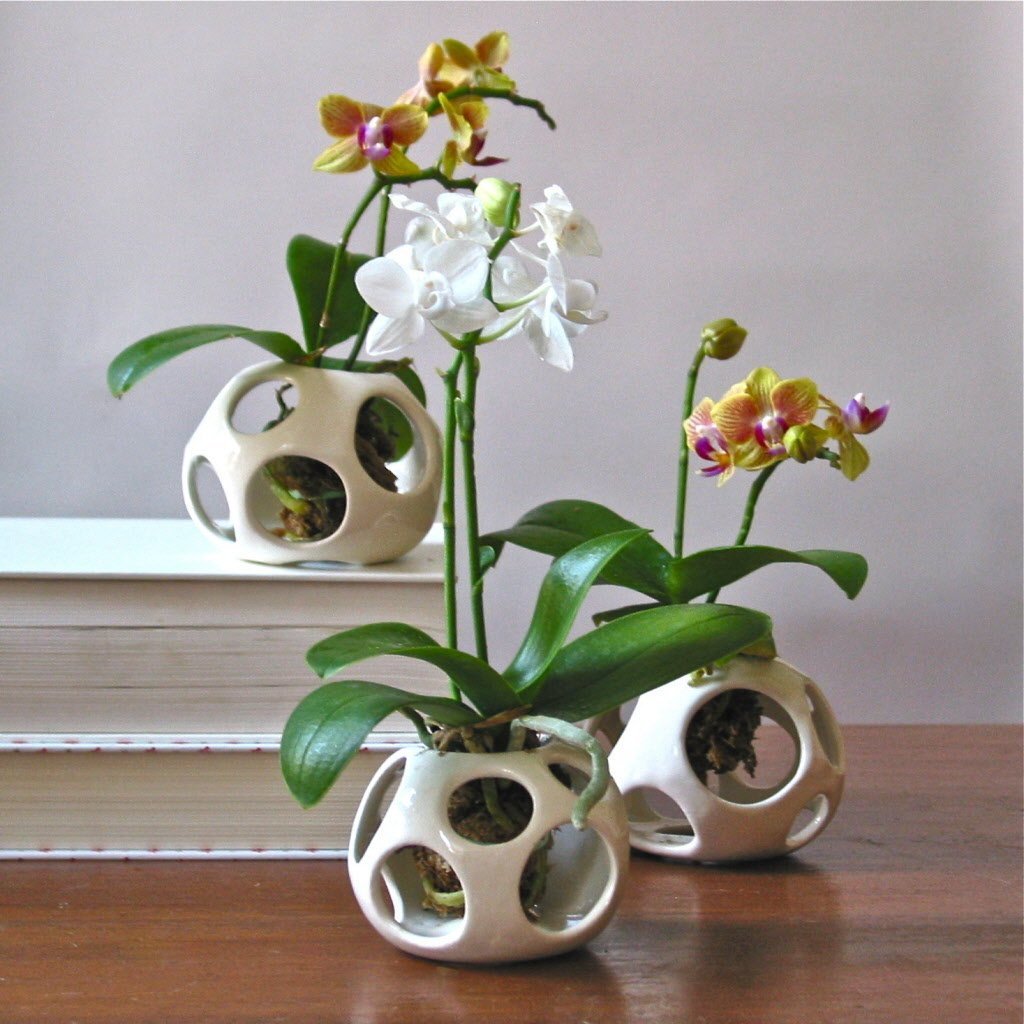
1 comment